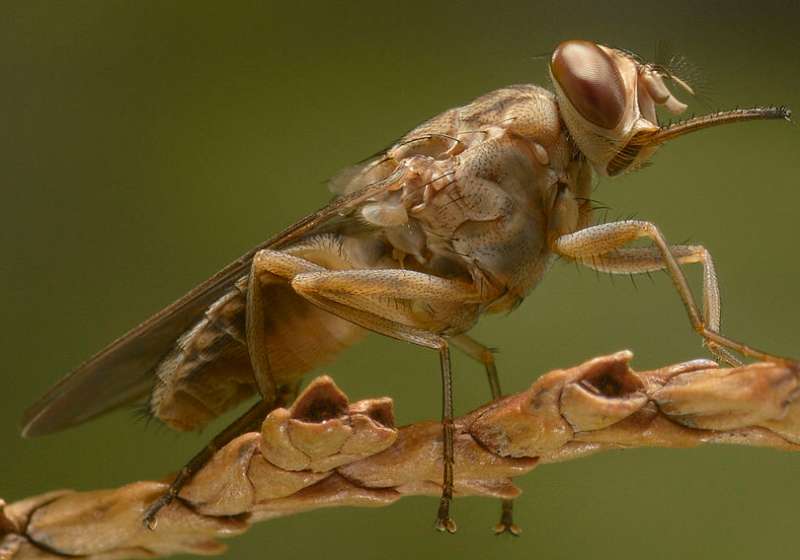New insect imaging technique may help victims of sleeping sickness

Researchers from the IAEA Insect Pest Control Laboratory in Vienna, Austria have employed near infrared still photographs and time-lapse video to observe the pupa of the living tsetse fly, and for the first time have watched its development into an adult. The imaging technique, which is described in the open-access Journal of Insect Science, may allow lab workers to identify male and female tsetse flies before they emerge as adults, which could make it easier to control them.
The tsetse fly is the vector of trypanosomiasis (sleeping sickness), which infects people and livestock in many areas of Africa. Releasing males that have been sterilized by irradiation—the Sterile Insect Technique—is one way of managing the flies. The new imaging technique may make the sterization process more efficient because males and females can be sorted earlier and easier. Males would then be sterilized and released to mate in the wild, and females could be kept in the lab in order to rear more males for future sterilization.
A key to distinguishing between the sexes is a clear difference in the timing of wing pigmentation in male and female flies.
"On day 25, females all showed some pigmentation in wings, and the beginning of pigmentation in legs and proboscis, while males still appeared white," wrote the authors. "On day 26, wings on many males had started to darken, but females showed far more pigmentation, both in wings and legs. On day 27 the difference became less obvious, with females still appearing to have significantly darker wings, but at less of a contrast to males."
The authors express hopes for wide application of the infrared technique they have used, writing that "It is our hope that this technique will be adapted for many purposes in the field of entomology and beyond."
More information: Near Infrared Imaging As a Method of Studying Tsetse Fly (Diptera: Glossinidae) Pupal Development, DOI: 10.1093/jisesa/iew047 . jinsectscience.oxfordjournals.org/content/16/1/72
Provided by Entomological Society of America




















